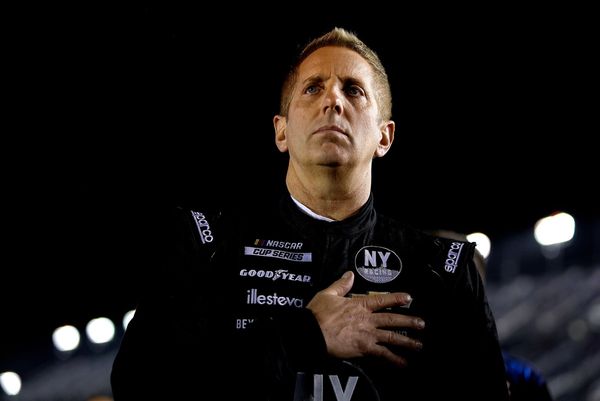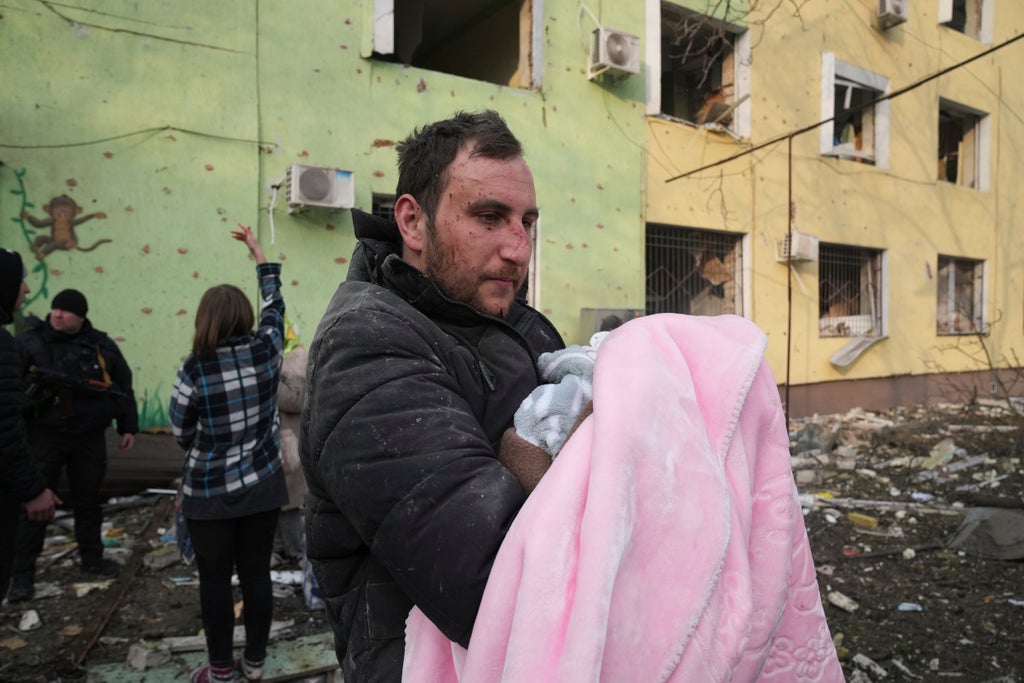
With supplies dwindling in the city of Chernihiv as it came under constant fire from Russian forces, desperate civilians stood waiting in a line to buy bread. Vladimir Putin’s troops opened fire on them, killing at least 10.
In Irpin, a mother, her two children and a friend dashed across a bridge to escape the city after their apartment building was struck by bombs one day earlier. They were hit by a Russian mortar strike - their bodies seen lying in the road in an image that sent shockwaves across the globe.
Expectant mothers prepared to welcome their new bundles of joy in the maternity ward of a children’s hospital in Mariupol. Bombs were dropped on the hospital, killing at least three and wounding 17 more. Days later, a pregnant woman who was injured in the attack died along with her newborn baby.
These are only a tiny fraction of the stories of civilians killed in the last five weeks during the war on Ukraine.
And while they may be unable to stop Mr Putin’s army from carrying out the horrific attacks in the first place, a group of American doctors are still doing what they can to save lives from afar.
Philadelphia-based surgeon Dr. Roxi Horbowyj tells The Independent that more lives could have been spared in the five weeks since Russia declared war if more people on the ground had known some simple - yet critical - life-saving techniques.
“Unfortunately bleeding is at the forefront of this war,” says Dr Horbowyj.
“There are a huge amount of bleeding injuries as bombs are going off, people’s limbs are being amputated, they are suffering extremities which require tourniquets being applied then and there.
“Blast waves are throwing people into the air and when they land, they get broken bones and bleeding. People are being hit with all sorts of shrapnel…”
That’s why she and other medics at Stop the Bleed have started teaching ordinary Ukrainians through live Ukrainian-language Zoom courses and pre-recorded YouTube tutorials how to save each other’s lives by stopping bleeding in someone seriously injured in warfare.
She says: “We know bleeding is the foremost reason that people die. It’s very much our belief that this can save lives in Ukraine which is why we’re doing this.”
Stop the Bleed was initially born out of the idea that everyday people should be able to learn basic bleeding control in a similar way that people learn basic CPR to keep a person alive until emergency responders get to a scene.
The idea became a reality in the aftermath of the 2012 mass shooting at Sandy Hook Elementary School which left 20 children and eight adults dead in Newtown, Connecticut.
Following the massacre, a local surgeon gathered a group of experts in the medical field to come up with an awareness campaign to help improve victim survival in such emergencies by empowering bystanders to administer lifesaving action.
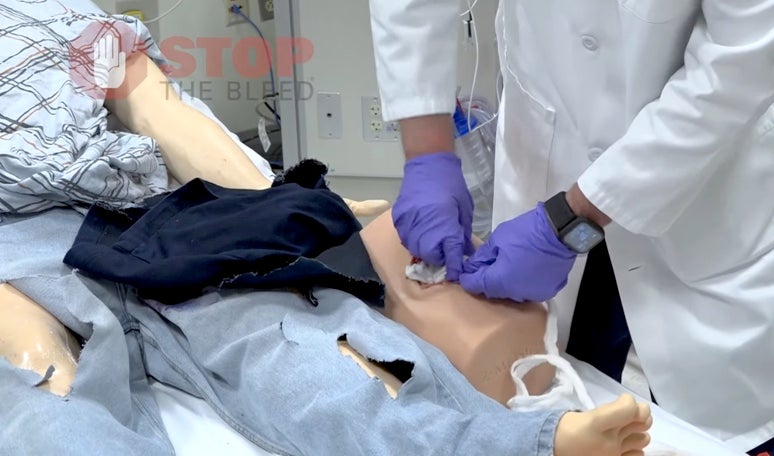
The first bleeding control training courses were launched in 2016 and, since then, 1.5 million people around the world have undergone the training.
Stop the Bleed training is focused around three quick techniques to stop someone from bleeding out: using your hands to apply pressure to a wound; packing a wound to control bleeding; and correctly applying a tourniquet.
“Bleeding control comes to the forefront of how to deal with traumatic injuries,” explains Dr Horbowyj.
“We all have about four litres of blood in our body. If you suffer a significant injury, you can lose volumes of blood very quickly.
“The goal is to stop the bleeding within a minute of the injury. A victim can die within three minutes of an injury if the bleeding isn’t stopped.
“If you’re well-versed in placing a tourniquet, you can do it in 20 seconds.”
Dr Horbowyj says she got involved in teaching the courses, led by the American College of Surgeons Committee on Trauma (ACS COT), around two decades ago.
Having done part of her own medical training in the country, she would travel to Ukraine to run courses there in person before the war began.
As Russia’s aggression escalated and the reality of war grew increasingly likely, the organisation began sending medical supplies to Ukraine.
Then, when Mr Putin launched his full-scale invasion on 24 February, Stop the Bleed adapted so it could teach skills to people remotely on the ground.
Just one day after the war began, Dr Horbowyj says the first combat casualty care course was held live over Zoom with courses held almost every single day since.
Taught in Ukrainian, the two to four hour free sessions are hands on, with attendees able to practice techniques in front of instructors via video so they can check what they’re doing and students can ask any questions they want.
Dr Horbowyj says anyone can attend the courses with everyone from medical professionals to students to military personnel and everyday civilians joining remotely to learn the skills they may need to use to save a life.
Demand for the courses from people on the ground in the war-torn country has escalated in the five weeks since the war began - so much so that they expanded the class size to allow 500 people to join at a time.
The format isn’t the only thing that’s different though.
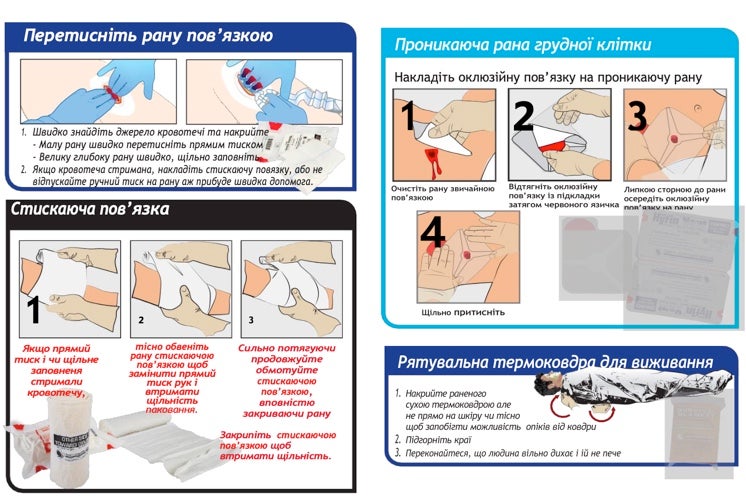
“We now start the courses with a prayer… and we can often hear shelling in the background of where some people are,” says Dr Horbowyj.
Making the training accessible is key.
So Dr Horbowyj says Ukrainian-language slides and pamphlets are also available for people to access.
And doctors have also started sharing short YouTube tutorials for people unable to join a live course.
One such four-minute YouTube video had reached 9,400 views by Tuesday and an even briefer 40-second video more than 4,000 views.
The organisation is also sending shipments of emergency supplies with bleeding control instructions to people on the ground in Ukraine and Poland, with the help of donations from the public.
Dr Horbowyj says some of these resources have been sent to fellow doctor friends who are currently living and working in some of the hardest-hit areas of Ukraine.
One of these friends in Chernihiv sent her a photo of a thank you card made from the signatures of patients who had been helped thanks to the supplies sent to the hospital.
Having spent a lot of time teaching in Ukraine, she says she knows several doctors still in the country.
She is communicating with them whenever she can - often checking their online presence for signs of life - as the human casualties they are dealing with mount by the day, all the while a growing number of hospitals are coming under attack.
“My friend who is a doctor at a hospital in Chernihiv came under a horrendous attack for three to four hours and the hospital was cut off from power, water and heat for days,” she says.
“He wasn’t online for 13 hours so I was getting worried. I was so grateful to hear from him.”
At a hospital in the city of Slavutych, another doctor told her they had been without power for six days.
In total, there were at least 31 attacks on health care facilities - with at least 12 people killed and 34 injured - in Ukraine between 24 February and 13 March, according to the WHO’s Surveillance System for Attacks on Health Care (SSA).
The bombing of the Mariupol children’s hospital on 9 March came in the middle of an agreed ceasefire to allowed people to evacuate the city.
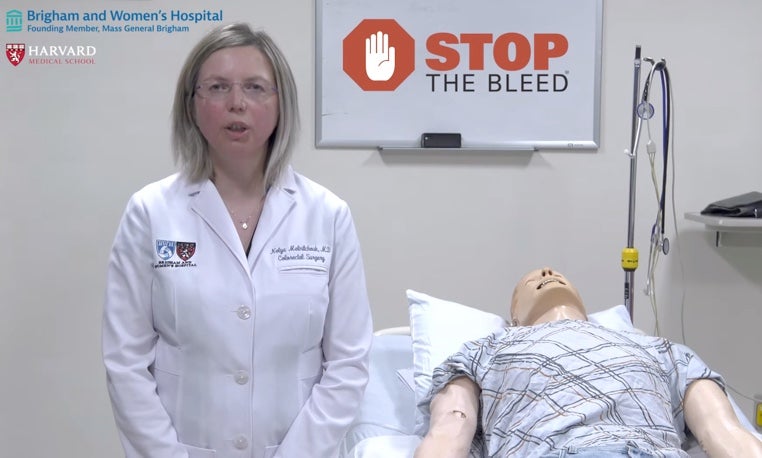
Earlier this month, Russian troops seized control of a hospital in Mariupol and were holding around 500 people hostage inside including doctors and their patients, according to Ukrainian officials.
UNICEF, UNFPA and the WHO together released a joint statement calling for “an immediate cessation of all attacks on health care in Ukraine”.
“These horrific attacks are killing and causing serious injuries to patients and health workers, destroying vital health infrastructure and forcing thousands to forgo accessing health services despite catastrophic needs,” they said.
"To attack the most vulnerable - babies, children, pregnant women, and those already suffering from illness and disease, and health workers risking their own lives to save lives - is an act of unconscionable cruelty.”
Dr Horbowyj says it is “beyond words” to see hospitals being targeted by Russian forces.
“I don’t even know what to say honestly,” she says.
With no way in and out of some of the worst-hit parts of the country, hospitals are also running out of much-needed emergency supplies.
But, the more people on the ground who can learn how to stop bleeding in people who have been severely wounded, the more they can help each other survive.
“The more people who can learn how to do it, the more people who can be saved,” she says.
“You can make an effective tourniquet out of a t-shirt.
“So even with supply shortages, if you have a t-shirt, you can save a life.”



